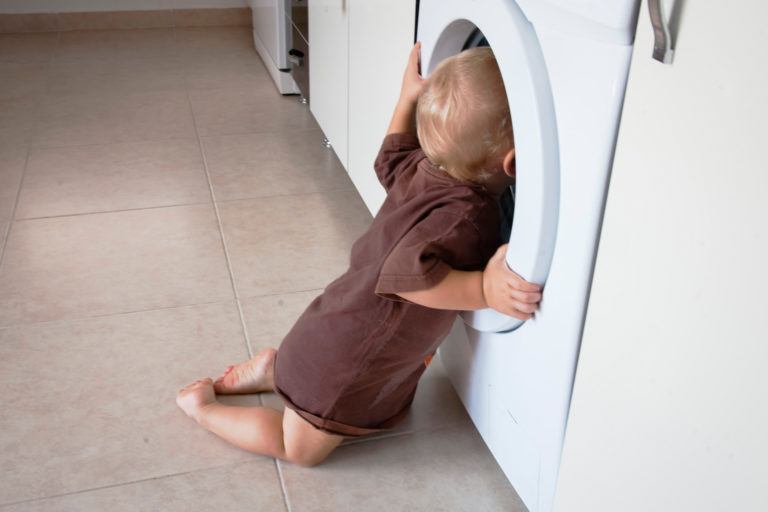
Quick Tips
- Eliminate the cloth diaper waste.
- Store the soiled cloth diapers until cleaning day.
- Cloth diaper washing day.
- Running your cloth diapers through the wash.
- Check your cloth diapers.
- Drying your cloth diapers.
Not to worry, I’m not going to include photographs of actual diapers needing cleaning. At the time that I am writing this article, my son is just shy of 15 months old. We go through roughly 35 or 40 diapers a week. That’s 140–160 per month, and 1,680–1,920 per year. It’s a bit ridiculous, right? It gets worse. Disposable diapers cost roughly 25 cents each. You use them once and throw them away, so you are literally throwing away $420–$480 a year. Most kids are in diapers until about 3 years old, so you are throwing away an average of $1,350 in just the first 3 years of your child’s life. I bought my first car for less than that.
This is why cloth diapers are the smarter choice. They are washable and reusable. They do require a little more work than disposables, but it pays off in the long run, and not just because it will save you money. In 2007, 4.3 million babies were born in the United States alone. Suppose each of those parents used disposable diapers, and their children go through them at the same rate my son goes through diapers. Over the course of the last 3 years, those children would have produced 7,740,000,000 diapers. That’s 7.7 billion diapers thrown away in America alone. And they are just rotting in landfills. That’s game over, man. Let’s see if we can drop those numbers a little bit.
Steps to Cleaning Cloth Diapers
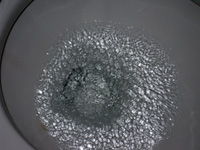 Eliminate the cloth diaper waste. After removing the soiled diaper from your child and replacing it with a clean one, secure the child someplace safe. If the diaper is just wet, proceed to the next step. Otherwise, flush the solid waste down the toilet. Usually a simple shake will do, but I have heard of it done with a rubber scraper or spoon that has been set aside specifically for this purpose. Do not leave solid waste in the cloth diaper as it will become increasingly more difficult to clean.
Eliminate the cloth diaper waste. After removing the soiled diaper from your child and replacing it with a clean one, secure the child someplace safe. If the diaper is just wet, proceed to the next step. Otherwise, flush the solid waste down the toilet. Usually a simple shake will do, but I have heard of it done with a rubber scraper or spoon that has been set aside specifically for this purpose. Do not leave solid waste in the cloth diaper as it will become increasingly more difficult to clean.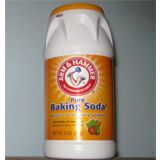 Store the soiled cloth diapers until cleaning day. If you do not intend to do your child’s laundry at least every other day, you’ll want to find a diaper receptacle with a lid. Fill the diaper receptacle about halfway full of water and mix in ¼ cup of white vinegar or Borax. This will help keep odors under control, as well as making stain removal easier. If you find that you are doing laundry every other day or more, you can leave the receptacle dry. Make sure you seal the diapers very well. If the smell starts to get to you, pour a little baking soda on top of the mix to help absorb some of those odors.
Store the soiled cloth diapers until cleaning day. If you do not intend to do your child’s laundry at least every other day, you’ll want to find a diaper receptacle with a lid. Fill the diaper receptacle about halfway full of water and mix in ¼ cup of white vinegar or Borax. This will help keep odors under control, as well as making stain removal easier. If you find that you are doing laundry every other day or more, you can leave the receptacle dry. Make sure you seal the diapers very well. If the smell starts to get to you, pour a little baking soda on top of the mix to help absorb some of those odors.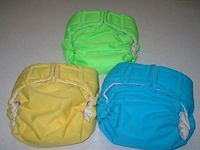 Cloth diaper washing day. If you are using a dry receptacle, fill it with enough water to cover all the diapers. Let them soak for about 2 hours. After you’ve let them soak, or if you are using a wet receptacle, proceed to empty the liquid into the toilet, taking care not to lose any diapers. If you wish, you can put your soaked diapers through a spin cycle in your washer to help remove the excess liquid.
Cloth diaper washing day. If you are using a dry receptacle, fill it with enough water to cover all the diapers. Let them soak for about 2 hours. After you’ve let them soak, or if you are using a wet receptacle, proceed to empty the liquid into the toilet, taking care not to lose any diapers. If you wish, you can put your soaked diapers through a spin cycle in your washer to help remove the excess liquid.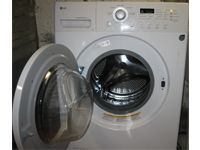 Running your cloth diapers through the wash. I recommend washing no more than 20–25 diapers at once. It is important to fasten any Velcro together so as to avoid long chains of diapers, otherwise known as a very messy magic trick. Also, use about half the recommended amount of detergent to avoid buildups in the extra absorbent cloth. Run your diapers through a cold wash and rinse cycle. When that has finished, immediately run them through a hot wash and cold rinse cycle. Adding a little vinegar to the second cycle will help keep your cloth diapers fresh.
Running your cloth diapers through the wash. I recommend washing no more than 20–25 diapers at once. It is important to fasten any Velcro together so as to avoid long chains of diapers, otherwise known as a very messy magic trick. Also, use about half the recommended amount of detergent to avoid buildups in the extra absorbent cloth. Run your diapers through a cold wash and rinse cycle. When that has finished, immediately run them through a hot wash and cold rinse cycle. Adding a little vinegar to the second cycle will help keep your cloth diapers fresh.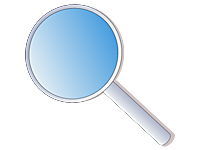 Check your cloth diapers. Make sure you don’t have any lingering stains on your clean cloth diapers before putting them in the dryer. The heat from the dryer will cause the stains to set, and removing those stains is all but impossible. If you do catch any stains, run the cloth diapers through one more cold wash and rinse with a little more vinegar in the rinse cycle. If you can, use an extra long spin cycle.
Check your cloth diapers. Make sure you don’t have any lingering stains on your clean cloth diapers before putting them in the dryer. The heat from the dryer will cause the stains to set, and removing those stains is all but impossible. If you do catch any stains, run the cloth diapers through one more cold wash and rinse with a little more vinegar in the rinse cycle. If you can, use an extra long spin cycle.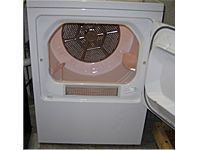 Drying your cloth diapers. Put your wet diapers in the dryer on high heat. Don’t worry too much about shrinking. Anything made to be a receptacle of human waste is made out of stern stuff. If you have a clothesline, or have a yen to set one up, make sure to hang your diapers in direct sunlight. This dries them faster, and that is, ultimately, better for them.
Drying your cloth diapers. Put your wet diapers in the dryer on high heat. Don’t worry too much about shrinking. Anything made to be a receptacle of human waste is made out of stern stuff. If you have a clothesline, or have a yen to set one up, make sure to hang your diapers in direct sunlight. This dries them faster, and that is, ultimately, better for them.
Clean Cloth Diapers = One Happy Baby
A clean butt makes for a happy baby. You don’t need to be a math whiz to figure that one out. This may seem like a long process, but once you get the hang of it, you’ll whiz through it as quickly as a baby whizzes through diapers. Sure, it is a little more of a hassle than disposable diapers, but it’s easier on your finances, better for the environment, and better for your baby in the long run. All that money you would have wasted on disposable diapers can go into your child’s college fund, buy a savings bond, or get a really neat toy.
Naturual Products for Cleaning Cloth Diapers
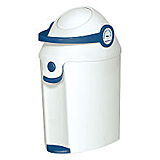 Baby Trend Diaper Champ Deluxe. This is the very same diaper pail we use at home. It has its very own airlock to help cut down on odors, and works wonderfully. It’s a wee bit pricey at $39.99, but it’s worth every penny. You can get the Diaper Champ slightly cheaper on Amazon, though.
Baby Trend Diaper Champ Deluxe. This is the very same diaper pail we use at home. It has its very own airlock to help cut down on odors, and works wonderfully. It’s a wee bit pricey at $39.99, but it’s worth every penny. You can get the Diaper Champ slightly cheaper on Amazon, though.
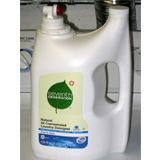 Seventh Generation Liquid Laundry Detergent. Here’s the deal: Baby skin and noses are sensitive. Harsh chemicals and strong odors can mess them up. So, rather than go through the headache of one pissed off, hurting, rash-ridden baby, go for this stuff. It’s all natural, it’s unscented, and it’s awesome.
Seventh Generation Liquid Laundry Detergent. Here’s the deal: Baby skin and noses are sensitive. Harsh chemicals and strong odors can mess them up. So, rather than go through the headache of one pissed off, hurting, rash-ridden baby, go for this stuff. It’s all natural, it’s unscented, and it’s awesome.
Seventh Generation Natural Fabric Softener Sheets.Have you ever been chafed by stiff clothing? Remember how cranky it made you? Imagine being a baby and being chafed. Now imagine being the parent of that baby. It’s time to go out and buy these dryer sheets to avoid that nightmare. They’re good for the reasons I listed for the laundry detergent, with the added bonus of being recyclable.